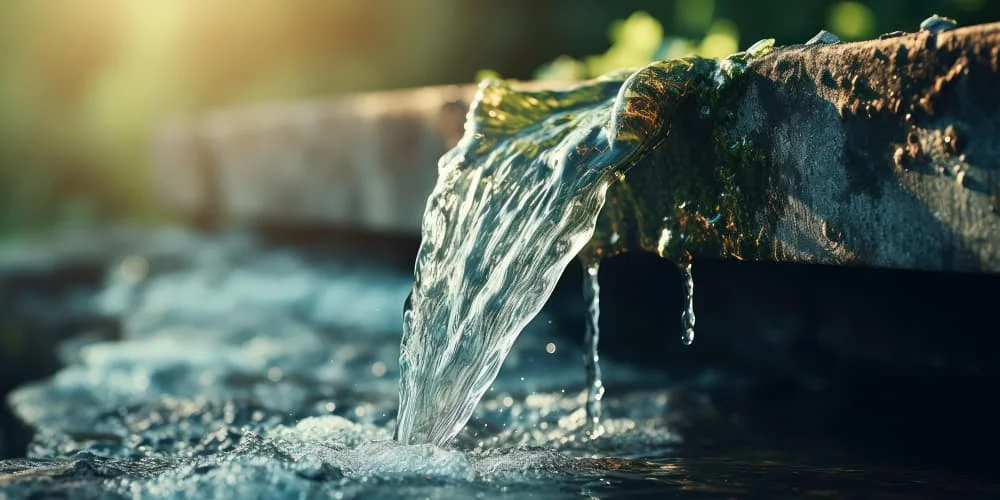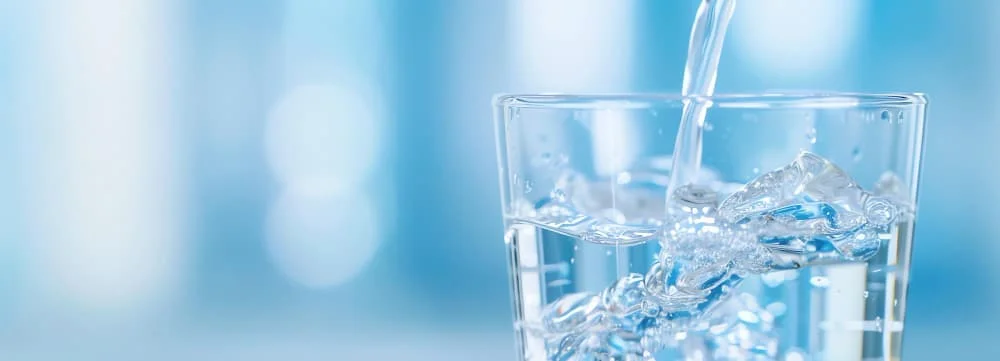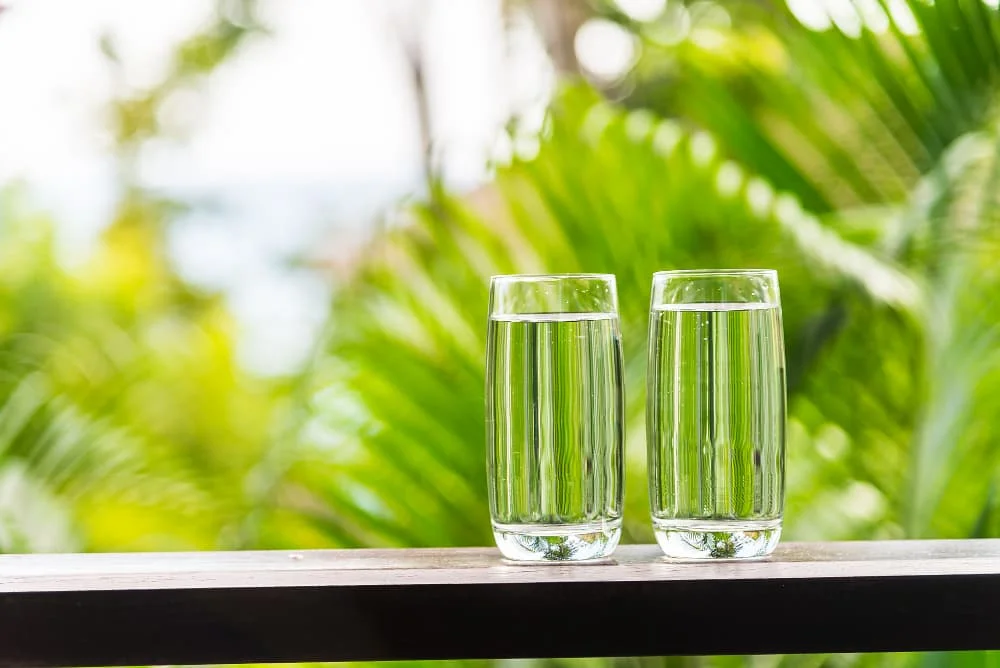Water is the cornerstone of life, supporting nearly every bodily function and maintaining overall health. Among the many options available, a common question emerges: spring water or purified water which is the better choice?
This article explores the key differences between spring water and purified water, from their origins to the processes they undergo and their mineral content. We’ll also examine differences in taste and consider potential health impacts. Armed with this knowledge, you’ll be better equipped to decide which type of water aligns with your needs and preferences.
Let’s dive into the unique characteristics of each type of water and see how they compare.
What is Spring Water?

Spring water originates from an underground source and naturally flows to the earth’s surface. Unlike water sourced from reservoirs or rivers, spring water is distinguished by its subterranean journey. It emerges through natural springs, which can range from small trickles to larger pools, and is often bottled directly at the source to maintain its unique properties.
As rainwater or snowmelt seeps into the ground, it undergoes natural filtration through layers of rock and soil. This process not only removes many impurities but also enriches the water with essential minerals like calcium, magnesium, and potassium. The exact mineral content depends on the geological makeup of the spring’s location.
Many people choose spring water for its naturally occurring minerals and its “fresh” taste, which is a result of its natural filtration through underground rock formations. When comparing spring water or purified water, spring water often appeals to those seeking a more natural option. Regulations for labeling water as “spring water” vary, but the term generally signifies natural sourcing with minimal processing, making it a top choice in the bottled water industry.
What is Purified Water?

Purified water undergoes extensive treatment to remove impurities, contaminants, and even some minerals. Unlike spring water, which is defined by its natural source, purified water can originate from various sources, such as tap water, groundwater, or surface water. Its defining feature is the thorough purification process it undergoes to achieve a high level of purity.
Common purification methods include:
- Reverse Osmosis: This process uses a semi-permeable membrane to filter out a wide range of impurities, including minerals, bacteria, heavy metals, and pesticides.
- Distillation: Water is boiled, and the resulting steam is condensed back into liquid form, leaving behind most contaminants and minerals. This process produces what is known as distilled water.
- UV Treatment: Ultraviolet light is employed to neutralize harmful microorganisms like bacteria and viruses. While this method sterilizes water, it doesn’t remove other types of contaminants.
- Activated Carbon Filtration: Often used as an additional step, this technique removes chlorine, organic compounds, and unpleasant odors to improve taste.
The goal of purification is to eliminate a wide array of contaminants such as chlorine, lead, pesticides, bacteria, and viruses. The result is purified water that is extremely clean and typically has a neutral taste due to the significant reduction in mineral content. This makes it a preferred option for individuals prioritizing purity in their drinking water.
Spring Water vs. Purified Water: A Detailed Comparison
Choosing between spring water or purified water often depends on personal preferences and individual needs. Below is a breakdown of their key differences, helping you make an informed decision:
| Feature | Spring Water | Purified Water |
| Source | Natural underground spring | Any source (tap, ground, or surface water) |
| Processing | Minimal processing, often only filtration and disinfection | Extensive processing (e.g., reverse osmosis, distillation, UV treatment) |
| Mineral Content | Contains naturally occurring minerals (calcium, magnesium, potassium) | Most minerals removed during purification |
| Taste | Often described as having a “fresh” or distinct taste due to minerals | Typically has a neutral or “flat” taste |
| Purity | Generally pure, but can vary depending on the source and surrounding environment | High level of purity due to rigorous processing |
Which Is Better: Spring Water or Purified Water?
There’s no definitive answer, as both options offer unique benefits and potential drawbacks:
Spring Water
- Pros:
- Naturally contains minerals like calcium, magnesium and potassium, which may support daily nutritional needs.
- Often preferred for its distinct, “fresh” taste.
- Cons:
- Mineral content varies depending on the source.
- Purity can be influenced by environmental factors and the source’s quality.
- Generally more expensive than purified water.
Purified Water
- Pros:
- Filtration to achieve a high level of purity.
- Free from most contaminants, including chlorine, bacteria, and heavy metals.
- Often more affordable and widely available.
- Cons:
- Stripped of minerals, which some people find less satisfying for taste.
- May taste “flat” or lack the natural flavor of spring water.
- Purification methods like reverse osmosis can be energy-intensive.
Many people choose spring water for its naturally occurring minerals and its “fresh” taste, which is a result of its natural filtration through underground rock formations. Whether you prefer spring water or purified water often depends on your priorities, as spring water emphasizes natural sourcing while purified water focuses on exceptional cleanliness. Regulations for labeling water as “spring water” vary, but the term generally signifies minimal processing, making it a popular option in the bottled water industry.
Is Spring Water Better Than Still Water?
The term “still water” simply refers to non-carbonated water, which includes spring water, purified water, and even tap water. The comparison is not about whether spring water is better than still water but rather which type of still water you prefer.
- Spring water offers natural minerals and a distinct taste derived from its source.
- Purified water provides a higher purity level with a neutral flavor profile.
Choosing between them depends on your preferences for taste, mineral content, and purity.

Which is the Healthiest Water to Drink?
With a variety of water options available, determining the “healthiest” choice can feel overwhelming. Here’s a closer look at the factors that influence this decision.
Is Purified Water the Healthiest Water?
Purified water stands out for its high level of cleanliness. Through processes like reverse osmosis or distillation, it removes contaminants such as harmful bacteria, viruses, heavy metals, and pesticides. This makes it an excellent choice for individuals with compromised immune systems or those living in areas where tap water quality is unreliable. When deciding between spring water or purified water, it’s essential to consider your personal priorities, such as the need for purity or the desire for natural minerals.
However, purification also strips away minerals, such as calcium and magnesium, which can benefit health. While purified water is exceptionally safe, it’s not necessarily “healthier” than other options. Its quality ultimately depends on the initial source of the water.
Which Is the Healthiest Water to Drink?
The “healthiest” water varies based on individual needs and circumstances:
- Spring water provides naturally occurring minerals, contributing to daily nutrient intake. Its taste is often preferred, but mineral content can vary by source. Opt for reputable brands that test regularly for contaminants.
- Purified water delivers exceptional purity, making it a reliable option for those concerned about water safety.
Key takeaway: The healthiest water is the one that fits your lifestyle, is readily available, and encourages consistent hydration. Staying hydrated is more important than the specific type of water you choose.
What Water Should You Drink a Day?
Regardless of type, ensuring proper hydration is vital. General guidelines recommend:
- Women: About 9 cups of water per day
- Men: About 13 cups of water per day
These are just averages; your needs may vary based on activity levels, climate, and overall health. Listening to your body’s thirst signals and drinking water regularly throughout the day is the best approach.
Which Water Is Perfect for Drinking?
Both spring water or purified water can be ideal, provided they meet safety and quality standards. Choose water that is:
- Free from contaminants
- Tested regularly by a reputable source
- Suitable for your personal preferences and lifestyle
If you’re unsure about tap water quality, consider investing in a reliable home water filter for added peace of mind. The most important factor is ensuring the water you consume supports your overall hydration and health.

Hydration Essentials: How Much Water Do You Really Need?
Staying properly hydrated is key to overall health. Water helps regulate body temperature, transport nutrients, remove waste, and keep your joints lubricated. Even mild dehydration can cause fatigue, headaches, and difficulty concentrating, not to mention a drop in physical performance. So, how much water do you really need?
How Many Water Bottles Should I Drink a Day?
There isn’t a one-size-fits-all answer to daily water intake. While the “8 glasses a day” rule is a helpful starting point, your personal needs depend on factors like:
- Activity Level: If you exercise regularly or engage in physically demanding work, you’ll need more water to replace what you lose through sweat.
- Climate: Hot and humid weather can increase your fluid loss, meaning you may need to drink more.
- Health Conditions: Some conditions, such as kidney problems or heart failure, might require you to adjust your water intake.
- Body Weight: Generally, larger individuals need more water than smaller ones.
Calculating Your Needs
A simple method to estimate your daily water requirement is to multiply your body weight in kilograms by 0.033. For example, a person weighing 70 kg would need about 2.3 liters of water per day (70 x 0.033 = 2.31).
Water Bottle Math
Water bottles come in different sizes, so here’s a quick guide to help you track your intake:
- 500 ml bottle: Aim for about 4-5 bottles to reach a 2-liter target.
- 750 ml bottle: About 3 bottles would give you roughly 2.3 liters.
- 1-liter bottle: 2 to 3 bottles per day can be sufficient for most adults.
Listen to Your Body
The best indicator of your hydration status is your body’s signals. Don’t wait until you feel thirsty—thirst is often a sign that you’re already mildly dehydrated. Also, check the color of your urine: pale yellow or clear means you’re well-hydrated, while dark yellow or amber suggests you need more water.
Conclusion
In the discussion of spring water or purified water, both options offer unique benefits and can contribute to a healthy, hydrated lifestyle. The main distinction lies in their source and processing:
- Spring water provides naturally occurring minerals and a distinct taste, making it appealing to those who value a more “natural” option.
- Purified water, on the other hand, ensures a high level of cleanliness by eliminating impurities and contaminants, making it a safe and reliable choice.
Ultimately, the best water for you depends on your personal preferences and priorities. If you value minerals and taste, spring water may be your go-to. If purity and safety are your primary concerns, purified water is a strong contender.
Regardless of your choice, remember that water quality and consistent hydration are what truly matter for your overall health. Always opt for water that meets safety standards and encourages you to drink enough throughout the day. Staying hydrated is the foundation of good health.
Frequently Asked Questions (FAQs)
What are the environmental impacts of bottled water?
Bottled water, whether spring water or purified water, can have considerable environmental impacts. The production and disposal of plastic bottles contribute to pollution and waste. To minimize this impact, consider using a reusable water bottle paired with a home water filter for a more eco-friendly hydration solution.
How can I test my water quality at home?
You can use home water testing kits available online or at hardware stores to check for basic contaminants like chlorine, lead, or pH levels. For more detailed results, certified laboratories offer comprehensive water testing. Additionally, your local water supplier provides an annual Consumer Confidence Report that outlines the quality of your tap water.
Is it safe to drink spring water directly from the source?
Drinking untreated spring water directly from a natural source is generally unsafe. Even clear water can harbor harmful contaminants such as bacteria, viruses, or parasites. Always treat or filter water from natural springs before consuming it.
Does purified water have fluoride?
Most bottled purified water does not contain fluoride, as the purification process often removes it. If you prefer water with fluoride or wish to avoid it, check the product label or opt for a water filter designed to retain or exclude fluoride, depending on your needs.






